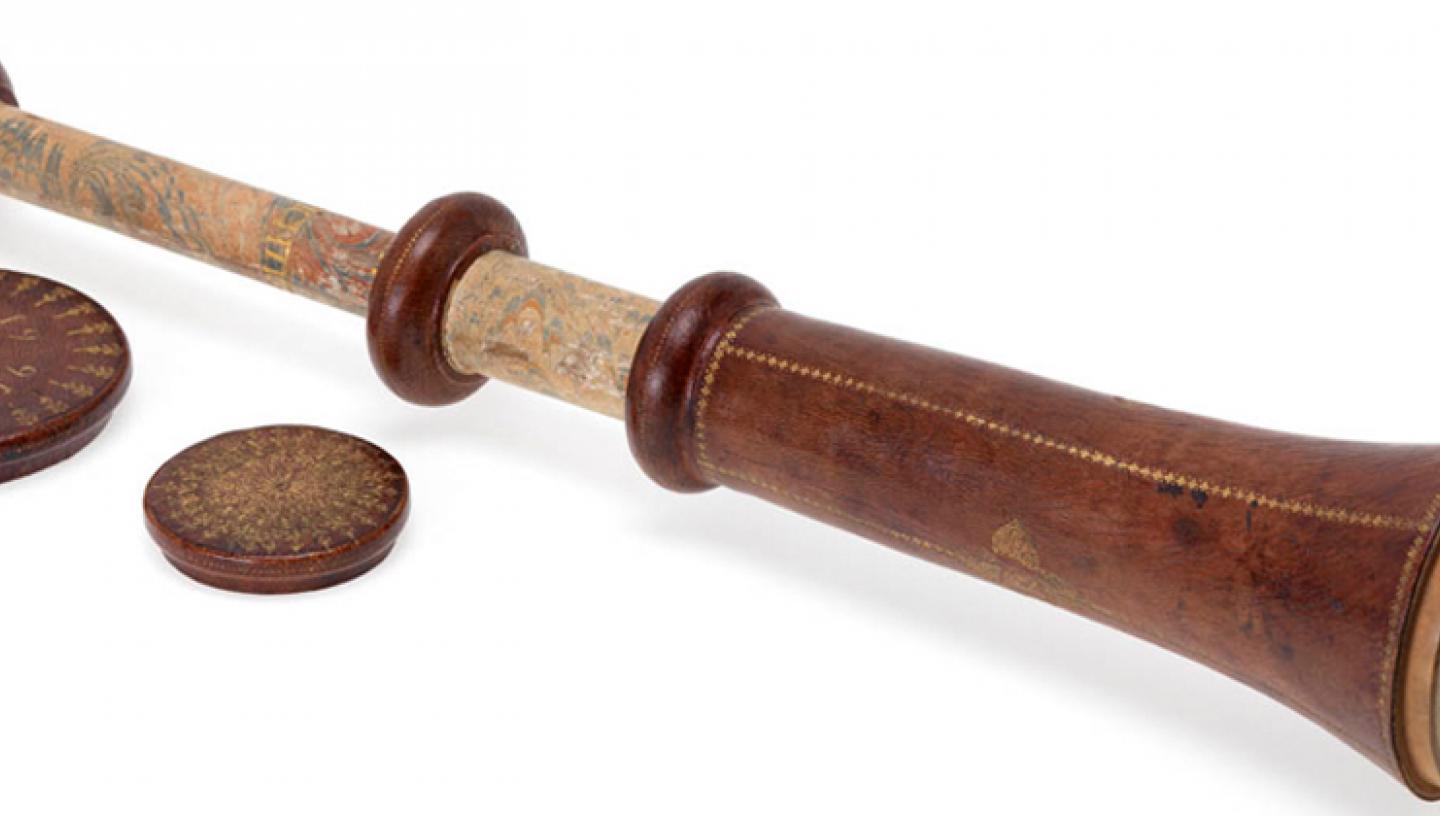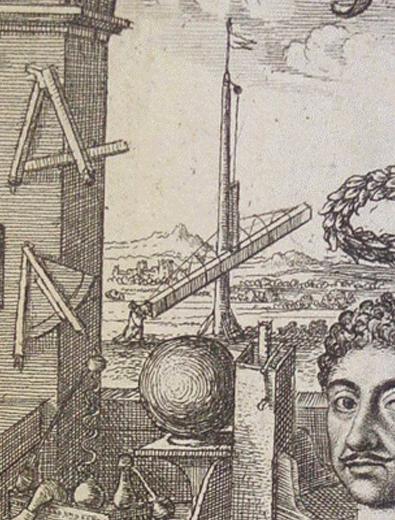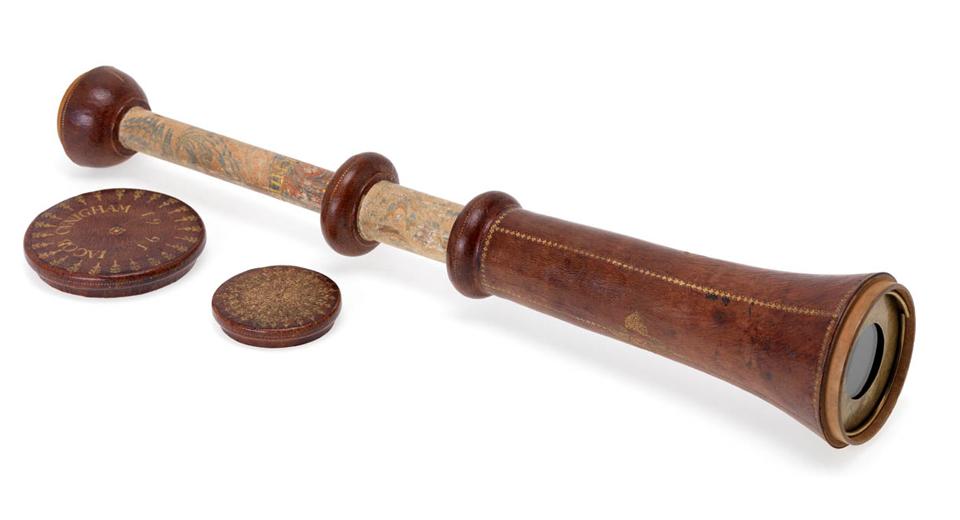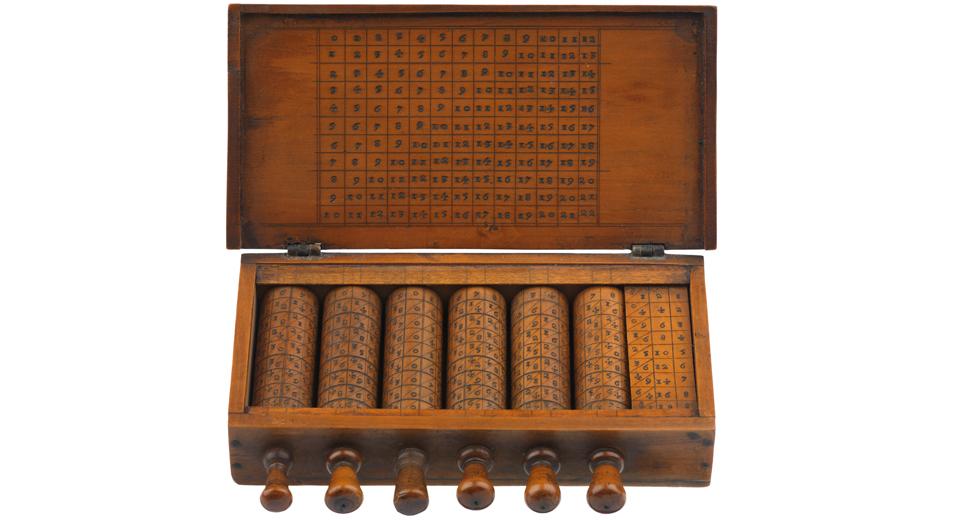
22 Dec 2015
Pepys was fascinated with the latest inventions and instruments. Richard Dunn, Senior Curator for the History of Science, tells us more.
We know from his diary that Pepys bought many telescopes, often from London’s leading optician, Richard Reeve. The first of these was in 1660, ‘a little perspective glass which I bought for my Lord, it cost me 8s.’ Reeve and Pepys had many dealings from then on.
First introduced at the beginning of the century, telescopes had been developed by the 1660s and were bringing new worlds into view. The limitations of lens manufacture, however, meant that astronomical telescopes were becoming longer and longer. They could be rather unsteady, as proved to be the case with a 60-foot (18.3m) telescope installed at the Royal Observatory, which began to wobble on its mast.
But the frontispiece to Thomas Sprat’s History of the Royal-Society of London (1667) celebrated a more successful one used by Robert Hooke, showing it alongside telescopically enhanced instruments as an icon of the new science.

The need for large lenses also partly explains the distinctive trumpet shape of one of the objects in the Samuel Pepys exhibition, a beautiful and highly unusual hand-held telescope dated 1661.

Pepys certainly enjoyed a bit of stargazing too. In August 1666, his diary records that,
"We did … at night see Jupiter and his girdle and satellites, very fine, with my twelve-foote glasse, but could not Saturne, he being very dark."
But he was not above the more earthy attractions of telescopic viewing. One Sunday in church the following May, he writes,
"I did entertain myself with my perspective glass up and down the church, by which I had the great pleasure of seeing and gazing at a great many very fine women; and what with that, and sleeping, I passed away the time till sermon was done"
Other objects in Samuel Pepys: Plague, Fire, Revolution highlight a range of different instruments that caught Pepys’s eye. In September 1667, for instance, his diary notes that Jonas Moore, Assistant Surveyor of the Ordnance at the time, ‘tells me the mighty use of Napier’s bones; so that I will have a pair presently’. Napier’s bones were sets of rods with numbers on their faces, which could be used to perform mathematical functions such as multiplication and division. The set in the exhibition comprises six cylinders held in a box, so that the numbers could be ‘dialled’. The fact that the box includes a tide table for British ports suggests a possible maritime use – a suitable conjunction of Samuel Pepys’s interests.

To see these amazing objects, and more, visit Samuel Pepys: Plague, Fire, Revolution